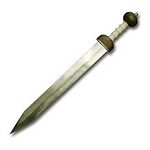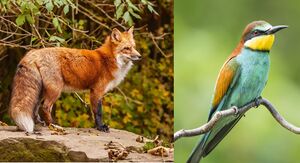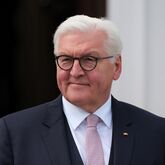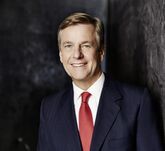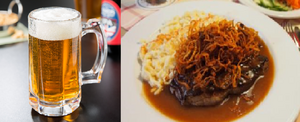New Sebronia
Federal Republic of New Sebronia
Sebric Federal Republic
| |||||||||
|---|---|---|---|---|---|---|---|---|---|
| Motto: "Bargen, Vældaren e Gråslanden ars verent, sot des Demiisma ybejr tei regantte!" "Mountains, forests and grasslands are united for democracy to rule over them!" | |||||||||
| Anthem: Hymn of Unity | |||||||||
 Location of New Sebronia (Dark Green)
| |||||||||
| Capital and largest city | Haæstre | ||||||||
| Official languages | Sebric Laverre | ||||||||
| Recognised national languages | Traditional Sebric | ||||||||
| Recognised regional languages | Kistol | ||||||||
| Demonym(s) | Sebric(s) | ||||||||
| Government | Federal democratic parliamentary Republic | ||||||||
• Federal President | Benjamin Tenidçi, LsM (since 2016) | ||||||||
• Federal Chancellor | Mikaela Valdt, SGP (since 2020) | ||||||||
| Legislature | Sebric Parliament | ||||||||
| Federal Council | |||||||||
| Federal Assembly | |||||||||
| Establishment | |||||||||
• TBA | TBA | ||||||||
• Declaration of the Alaris Confederation | 1578 | ||||||||
• Establishment of the Sebric Empire | 1733 | ||||||||
• Declaration of the Federal Republic | May 14th 1912 | ||||||||
| Area | |||||||||
• Total | 711,937 km2 (274,880 sq mi) | ||||||||
| Population | |||||||||
• 2021 estimate | 112,701,000 | ||||||||
• 2020 census | 112,048,592 | ||||||||
• Density | 157.39/km2 (407.6/sq mi) | ||||||||
| GDP (PPP) | 2020 estimate | ||||||||
• Total | 4.75 Trillion ACU | ||||||||
• Per capita | 42,357 ACU (1:1.072) | ||||||||
| GDP (nominal) | 2020 estimate | ||||||||
• Total | 4.43 Trillion ACU | ||||||||
• Per capita | 39,512 ACU | ||||||||
| Gini (2020) | medium | ||||||||
| HDI (2020) | very high | ||||||||
| Currency | Eri (ξ) (ERI) | ||||||||
| Time zone | UTC-4 | ||||||||
• Summer (DST) | UTC-4 (not observed) | ||||||||
| Date format | dd-mm-yyyy | ||||||||
| Driving side | right | ||||||||
| Calling code | +420 | ||||||||
| ISO 3166 code | NSB | ||||||||
| Internet TLD | .nsb | ||||||||
New Sebronia (Sebric: Navæ Sebroni, Laverre: Nouve Sebrònne), officially the Federal Republic of New Sebronia (Sebric: Federirepebljė Navæ Sebroni, Laverre: Republice Fedèrale dela Nouve Sebrònne), is a federal democratic parliamentary republic on the southern coast of Clabury Lake in Thuadia, bordering Rehnelm to the north, Bakyern to the east, Kistolia to the west and Tiskaiya and Qazhshava to the south-west. It is devided into a total of 18 partly-souvereign constituent federal states, and with the capital city of Haæstre, as well as the two coastal cities of Deimeka and Den Edeldec as its major trade hubs, New Sebronia is considered one of the biggest economies in the northern Thuadian region, as well as one of the most environmentally friendly and stunning countries on Anteria.
Ethymology
The Common name is a derivative of the Sebric name Sebroni, the modernised version of the Traditional Sebric word Sabroniyen, which comes from the term "Sabrer onycer lendiyen" ("Sunny green place"). The term was used by batrecist monks to name the flat lands north-west of the Sydhoesh Mountain Range and became very common among the people who lived there, as evidenced by many ancient writings in which the term is mentioned. The first script mentioning the word Sabroniyen as a name has been dated back to the 3rd century CE.
History
First Sebric civilizations
First signs of civilization in today's Sebronia have been found to be in the Lartredt River Valley, in which papyrus scripts - dated back to roughly 1400 BCE - have been found in few ruins, scattered around the valley. The inscriptions have not been fully translated and big parts are missing, nontheless many believe that there could have been civilizations as far back as 2500 BCE in the valley. The scarce amount of intact scripts, vases and other antiquities leads to suspect, that a possible series of unrecorded wars lead to the destruction of many ancient villages. More signs of separate civilizations were found near the Sherken Lake Group and in the far-east, near today's Sebro-Bakyernian border, dated back to ~1200 BCE.
First batrecist civilizations came to be in the north-eastern parts of the Sydhoesh Mountain Range, separating Sebronia from today's Bakyern. At around 1000 BCE, those civilizations formed the first sebric states, known as the Batrec City States. During that time, a big increase of art and literature shaped the epoch, as batrecist literature spread to more and more newly formed sebric states. Not only did this lead to the spreading of the batrecist religion in Sebronia, but also many orthological and grammatical reforms of the equally fast spreading Proto-Batro language. Many separate folk beliefs contradicted with the rising popularity of the new religion, causing the first religional wars between sebric states, often resulting in destruction of cultural artifacts and annexations.
Great Migration
Alaris Confederation/Confederacy of Alaris
TBA
Sebric Empire
Sebronia in the Great War
TBA
The Sebric Revolution
TBA
New Sebronia - Sebronia since 1912
TBA
The Dutchy-Sebric War
TBA
Geography
New Sebronia is located at the southern coast of Clabury Lake in Thuadia, bordering Rehnelm to the north, Bakyern to the east, Kistolia to the west and Tiskaiya and Qazhshava to the south-west. With 711,937 km^2, New Sebronia is smaller than 4 of its 5 neighbors, though it has the highest population out of the 6 nations, due to its relatively high population density. Its many big cities, in which a majority of the sebric people live, result in much untouched gras- and farmland, as well as many big forests, especially in the western and south-western parts of New Sebronia.
Climate
Due to New Sebronia being located at an latitude of ~17-26°, extreme temperature changes between summer and winter aren't very common. In addition to the rather temperate climate in that area it makes New Sebronia a very attractive tourist destination, especially at the northern coast in summer and the mountains in the east in winter. Especially in the south and west temperatures rarely fall to less than 3°C, while in the eastern mountain area, in can get much colder during winter due to high altitudes.
Biodiversity
Since New Sebronia values and protects its environment, its biodiversity is still very multifarious. About 32.2% of New Sebronias total land area is covered by forests, in which the national animal, the fox, lives. Also well-known animals are deers, brownbears, boars, mardens, lynxes, the Mybæki (also referred to as Bee-eater), and approximately 50,100 other animal species living in New Sebronia, of which 33,600 are insects. Many of those species live in national parks or nature reserves so they don't go extinct, same goes for some of the 10,200 plant species.
Politics
TBA
Government and Parties
Federal states and Administrative Districts
As a federal republic, New Sebronia consits of 18 states, TBA
Law
TBA
Government Spending
TBA
Foreign relations
New Sebronia has many political and military allies, and mostly has warm relations to democratic, environmentally friendly nations, as well as generally nations with the same political, economical, and ecological interests and goals. Dictatorships or very authoritarian as well as environmentally unfriendly nations are usually not liked
| Country/Union/Autonomous District | Status (Scale 1-5) |
Notes on relations | Mutual Embassies | Sebric Ambassador | Foreign Ambassador |
|---|---|---|---|---|---|
| 3 | Both members of some few organisations like SU, though the bak ideology is not much liked in New Sebronia | Yes (Deimeka, |
Rėsçy Karibarge | Heinrich Koller | |
| 4 | Yes (Deimeka, |
Taiga Alliba | Ilham Abdullah | ||
| 5 | Both members of several organisations like SU, PotR. TACO and IGP, having similar goals | Yes (Deimeka, |
Benjåmin Florianson | Yuli Kuznetsov | |
| 5 | Major trade partner and very many similarities in politics, policies, etc. | Yes (Haæstre, |
Eva Tomådedt | Luci Kitoli | |
| 2 | Militaristic dictatorship, yet stable | Yes (Deimeka, |
Galy Almahri | Rezmân Manzâneh |
Military
TBA
Economy
TBA
Demographics
Population
TBA
Largest cities or towns in New Sebronia
Federal Census Bureau (2019) | |||||||||
|---|---|---|---|---|---|---|---|---|---|
| Rank | Federal State | Pop. | Rank | Federal State | Pop. | ||||
Haæstre  Deimeka |
1 | Haæstre | Haæstre State | 6,595,277 | 11 | Firtenjor | Valania | 433,987 |  Den Edeldec  Navæbariken |
| 2 | Deimeka | Sherkenlakes | 4,216,013 | 12 | Alaris City | Alaris | 403,364 | ||
| 3 | Den Edeldec | Vafitporte | 4,100,192 | 13 | Saikabarge | Merlin | 382,377 | ||
| 4 | Navæbariken | Bœrens | 1,703,124 | 14 | Breggenvål | Inbrek-Lyren | 350,231 | ||
| 5 | Pistora | Pistrente | 860,007 | 15 | Feriben abæler Kreiss | Sherkenlakes | 325,111 | ||
| 6 | Sibastre | Lower Lantery | 709,663 | 16 | Hødelstæt | Sarben-Osberland | 310,237 | ||
| 7 | Felstæt | Felstæt | 620,046 | 17 | Valhėm | Haæstre State | 277,292 | ||
| 8 | Håara | Pistrente | 605,234 | 18 | Dresdtaldenhėm | Alaris | 266,420 | ||
| 9 | Monnem | Sarben-Osberland | 561,125 | 19 | Itæstre | Valania | 261,822 | ||
| 10 | Alanbargen | Tretvel | 470,230 | 20 | Lėekstæt | Elbrect | 241,499 | ||
Language
TBA
Sebric
TBA
Traditional Sebric
TBA
Religion
TBA
Healthcare
TBA
Education
TBA
Culture
Cuisine
The sebric cuisine is broadly diversified, but is most known for meat and beer-like alcoholics, as well as fish on the coast. Sebrics are said to have a sensitive palate towards sour food, but that is mostly a myth. In New Sebronia, many dishes are cooked with rather spicy ingredients, the use of pepper and curry spices is relatively high. Fish is almost always eaten with sides like potatoes or fries, though it is only popular in the north, at the coast. Because of the big, flat lands in temperate climate, agriculture is a big industry in New Sebronia. Most sebric farmers and consumers produce and consume organic products like apples and other fruits, and that high supply is why organic products are alot cheaper to buy than in other countries.
The national dish of New Sebronia is the traditionally called "Sebri Rumpståk", a rumpsteak with molten herb butter in onion-beer-sauce, together with fried onions and thick spaetzles, which are called "Sepæselen". National drink is the "Vøderbijr", a kind of beer with a relatively high alcohol percentage of 13%. It is often drunk on important parties and festivals like the Days of Equilibrium, but also traditionally on the 18th. birthday of a boy, celebrating his adulthood.
Art & Music
TBA
Sports
TBA
Literature
TBA




